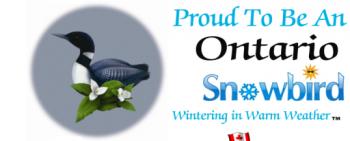Welcome visitor can you Log In or Create an Account
Call us toll free: 888-822-2952
-
0
$0
Recently added item(s)
The Conception of Ontario’s State Bird and Flower

The Conception of Ontario’s State Bird and Flower
Ontario is the most heavily populated province in all of Canada. The nations capital, Ottawa, is also found within this Provence. This territory is full of culture and symbolism. Ontario has several provincial symbols used to illustrate parts of their culture. The provincial bird, for example, is the Common Loon. These brilliant birds can be found all around the province. Ontario’s flower is the White Trillium. Most commonly found on the forest floors, the White Trillium not only looks beautiful, but is used as a source of food and medicine by the native people.
During 1937 Ontario passed a Floral Emblem Act. The purpose of this act is to declare the flower known scientifically as the Trillium Grandflorum as Ontario’s official floral symbol of the province. Better known as the White Trillium, this flower can be easily found in the woodlands and forests within the province towards the end of April through the begging of may. The adoption of this flower as an official Ontario symbol was influenced by a movement during the first world war. The movement was motivated to select a floral emblem that would be suitable to plant on the graves of Canadian soldiers over seas. The Ottawa horticultural committee suggested the Trillium best fit the cause. Although this flower never became a national symbol, it remains a provincial Ontario symbol to this day.
The Common Loon is the provincial symbol for Ontario. These Loons are terrific swimmers and divers. These Loons can be typically found swimming along many of the province’s lakes and rivers including the Great Lakes. The Avian Emblem Act declared the Gavia Immer or the Common Loon as the avian emblem of Ontario on June 23, 1994. The loon was chosen for its symbolism of wildlife and independence. The marking of the loon can be seen in many places throughout Ontario’s culture as well as in other parts of Canada. In fact, Canada replaced its dollar bill with a coin in 1987. The tails side of the coin features a swimming Loon. The coin has sense been assigned the nickname “Loonie”.
The people of Ontario take grate pride in their province as well as the culture that goes along with it. Ontario adopted these provincial symbols to depict a sense of pride and respect for themselves and their community.
Who would ever think that a child would have any power in the operations of a government? Who would also ever think that, after the government officially chose a bird as the state bird, it would fail to protect it? There are behind the scenes stories of Ontario, Canada’s official state bird and flower. Now, I will tell you the rest of the stories.
Back in 1988 the Ontario Ministry of Natural Resources got an idea. So the office sent out word to the provinces children between the ages of 9 and 11, to get their suggestions for the official state bird. The office received many suggestions. The American robin, Canadian goose and mallard were among them. After the Ministry carefully looked over all the recommendations from the children, the common loon was chosen. However, it was not until 6 years later that it officially named identified it. On June 23, 1994 the Ministry decided now was the time.
The common loon is also referred to as the ‘great diver’. It dives into the water for its food. It can dive up to 70 meters under the surface, and remain under for up to 3 minutes. It also eats its food under the water. Why it is called “common” is anyone’s guess. There is nothing common about it beauty. It has a black head and white undercoat. Its webbed feet enable it to swim under the water fast, so it can catch its food.
Now the White Trillium is another story. Ontario passed the “Floral Emblem Act” in 1937. This act made the White Trillium the provinces state flower. now here is the strange part. Even though this gorgeous flower was now the official flower of Ontario, it was not protected throughout the province. The only places it was protected was in provincial parks and on the property of conservation groups. Nowhere else. Most Ontario citizens were unaware of that fact.
Then, in 2009, an Ontario citizen did find it out, and started a campaign to amend the law. It worked. The Loon Protection Act amended the 1937 law. But, not all the way. It is illegal to dig up the White Trillium, but not if it is on private property, and you want to improve your property. Also, not if it is part of your job. Also, if it is in a provincial park, for improvement of the park.
-
Join Us on Facebook
-
Latest Tweets
Follow on Twitter -
Contact Us
-
Store Location
-
Huntington, MA,
Huntington, MA, USA -
888-822-2952
-
Monday - Friday: 08.00-20.00
Saturday: 09.00-15.00
Sunday: closed
-



